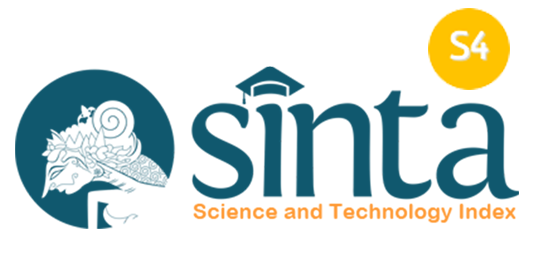Integrating MATLAB in teaching linear programming at the university level
Abstract
Learning in higher education is inseparable from the role of lecturers in preparing learning, one of which is by preparing learning media that can help and guide students in understanding the material. One of the software that can be developed as a media in mathematics learning is MATLAB. This descriptive research used the integration of MATLAB in teaching and learning linear programming. The subject of this research were students in mathematics education class 2016B Universitas PGRI Adi Buana Surabaya. Data were collected by observation and questionnaire. From the data, can be concluded that by utilizing MATLAB on Linear Programming, students were able to use the MATLAB in understanding and solving Linear Programming problems. Students also gave positive responses toward the integration of MATLAB in linear programming teaching and learning.
Keywords
Full Text:
PDFReferences
Acharya, B. R. (2017). Factors affecting difficulties in learning mathematics by mathematics learners. International Journal of Elementary Education, 6(2), 8-15.
Arsham, H., Cimperman, G., Damij, N., Damij, T., & Grad, J. (2005). A computer implementation of the Push-and-Pull algorithm and its computational comparison with LP simplex method. Applied mathematics and computation, 170(1), 36-63.
Bixby, R. E., Gregory, J. W., Lustig, I. J., Marsten, R. E., & Shanno, D. F. (1992). Very large-scale linear programming: A case study in combining interior point and simplex methods. Operations Research, 40(5), 885-897.
Das, R., & Das, G. C. (2013). Math anxiety: The poor problem solving factor in school mathematics. International Journal of Scientific and Research Publications, 3(4), 1-5.
Furner, J. M., & Kumar, D. D. (2007). The mathematics and science integration argument: A stand for teacher education. Eurasia Journal of Mathematics, Science and Technology Education, 3(3), 185-189.
Gass, S. I. (2003). Linear programming: Methods and applications. Courier Corporation.
Moyer, T. O. (2017). The simplex method for systems of linear inequalities. Ohio Journal of School Mathematics, 74(2), 15-21.
Gil, P. (2017). Short project-based learning with MATLAB applications to support the learning of video-image processing. Journal of Science Education and Technology, 26(5), 508-518.
Han, X. (2009). Teaching elementary linear algebra using MATLAB: An initial investigation. The Scholarship of Teaching and Learning at EMU, 2(1), 171-182.
Jacob, R., Hill, H., & Corey, D. (2017). The impact of a professional development program on teachers' mathematical knowledge for teaching, instruction, and student achievement. Journal of Research on Educational Effectiveness, 10(2), 379-407.
Kristanti, F., Ainy, C., Shoffa, S., Khabibah, S., & Amin, S. M. (2018). Developing creative-problem-solving-based student worksheets for transformation geometry course. International Journal on Teaching and Learning Mathematics, 1(1), 13–23.
Majid, M. A., Huneiti, Z. A., Balachandran, W., & Balarabe, Y. (2013). MATLAB as a teaching and learning tool for mathematics: a literature review. International Journal of Arts & Sciences, 6(3), 23-44.
Mallet, F., & De Simone, R. (2015). Correctness issues on MARTE/CCSL constraints. Science of Computer Programming, 106, 78-92.
Otto, S., & Denier, J. P. (2005). An introduction to programming and numerical methods in MATLAB. USA: Springer Science & Business Media.
Rosiyanti, H. (2016). Penggunaan software lindo dengan metode pembelajaran penemuan terbimbing untuk meningkatkan motivasi belajar mahasiswa matematika angkatan 2013 pada matakuliah program linier. FIBONACCI: Jurnal Pendidikan Matematika dan Matematika, 2(2), 19-27.
Schoenfeld, A. H. (2010). How we think: A theory of goal-oriented decision making and its educational applications. New York: Routledge.
Smith, F. M., & Hausafus, C. O. (1998). Relationship of family support and ethnic minority students' achievement in science and mathematics. Science Education, 82(1), 111-125.
Steen, L. A. (2001). Mathematics and numeracy: Two literacies, one language. The mathematics educator, 6(1), 10-16.
Talbert, R. (2013). Learning MATLAB in the inverted classroom. The ASEE Computers in Education (CoED) Journal, 4(2), 89-100.
UMS, T. F. (2013). Modul III linear programming dan visualisasi. Surakarta: Fakultas Teknik Universitas Muhammadiyah Surakarta.
Watson, E. (2018). Why Teach High School Mathematics? Integrating Mathematics with Other School Subjects. Alberta Science Education Journal, 45(3), 5-13.
Zulfikarijah, F. (2004). Operation research. Malang: Bayumedia Publishing.
DOI: https://doi.org/10.18860/ijtlm.v1i2.5882
Refbacks
- There are currently no refbacks.
Copyright (c) 2020 International Journal on Teaching and Learning Mathematics

This work is licensed under a Creative Commons Attribution-NonCommercial-ShareAlike 4.0 International License.
Indexed by :
.png)
.jpg)
.png)

.jpg)



